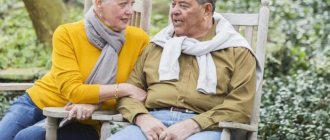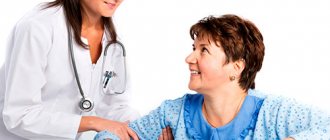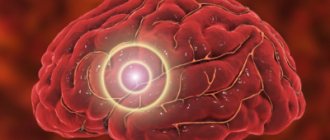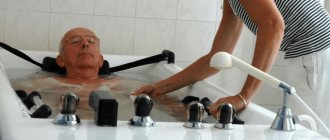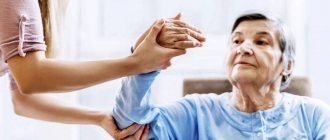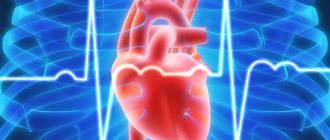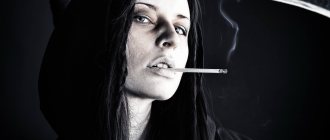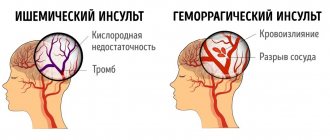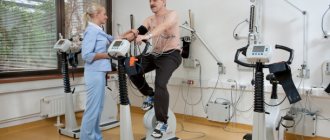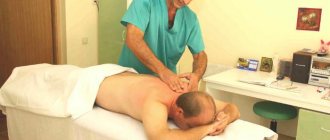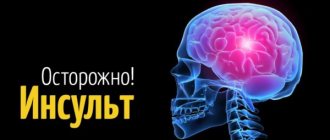Caring for the patient after stroke - the basis of the rehabilitation process. This moment becomes critical for immobilized patients and people with impaired sensitivity. Without proper care, even those who have a chance to recover die or suffer from severe complications.
Consequences of a stroke
Cerebral circulation disorders often lead to serious consequences. Among them are motor dysfunctions. A person loses the ability to move independently, cannot hold objects in his hands or take them.
Paresis and paralysis are observed. When it is possible to make movements, it is often discovered that it is impossible to coordinate them and maintain balance. This happens when walking, trying to sit down, or changing body position.
Sensitivity disorders are noted. The victim loses the ability to feel pain and temperature changes. There is a feeling of numbness, burning, crawling. The limbs become as if they were made of cotton.
In difficult cases, a disorder of spatial and temporal orientation is possible.
With damage to the cerebral hemispheres or an extensive stroke, memory deterioration, loss of the ability to perform logical operations, and a decrease in cognitive abilities are noted.
For reference. Circulatory disorders affecting the speech centers lead to loss of speech functions, loss of the ability to express one’s thoughts, choose the right words, construct phrases, and understand spoken speech and written words.
A stroke often leads to a deterioration in psycho-emotional state. Depression, apathy, and lack of self-confidence develop. Many become aggressive, hot-tempered, and capricious.
Neurological disorders
Some strokes are accompanied by decreased sensation in the arms and legs. The pain threshold often drops, anesthesia and paresthesia occur. With such problems, rehabilitation may not bring any positive results. Violations can cause long-term consequences.
Physiotherapy is carried out to improve the sensitivity of the limbs.
Sometimes painful manifestations of reflexes occur. If people understand that patients after a stroke clench their fist when touching a limb, they need to wait some time or seek advice from a specialist. Often it is not possible to get rid of such a reflex.
Main objectives of rehabilitation
The goal of caring for a patient with a stroke is to improve his quality of life, stabilize his condition, and improve his well-being. With mild and moderate lesions, proper care and the patient’s desire for recovery can help him recover almost completely.
In case of severe pathologies, care will allow to achieve a partial return of lost functions, prolong life, and avoid complications in the form of dangerous diseases.
To achieve these goals, relatives of a stroke victim face several main tasks:
- prevention of bedsores;
- maintaining hygiene;
- safety;
- restoration of lost functions;
- catering;
- prevention of pneumonia;
- prevention of thrombosis;
- exclusion of relapses.
For reference. It is easy to define tasks, but difficult to carry them out, especially when it comes to loved ones.
Improving their well-being requires regular, daily work. It is associated with a high risk of emotional burnout, loss of self-confidence, significant restrictions in personal life, narrowing of interests, and negative emotions.
How to restore memory
To help a person remember any events in his life, relatives will need to hold special events. First of all, it is surrounding the patient with love and attention. You should not stop treatment at the first improvements. Only full-fledged therapy will help restore a person’s memory.
Finger games will be effective. For example, bending fingers, clenching fists, clapping hands is carried out in parallel with reciting simple children's poems. At the same time, you can stroke the patient’s palms and rub them. This will help focus a person's attention on gestures, as well as stimulate speech and memory.
Over time, you can begin to try to learn simple rhymes with the patient, which is good for memory training. This must be done gradually: today learn one line, and tomorrow – the second, etc. Poems are taught in a playful and friendly environment.
If the person performing the manipulation is nervous and irritated, this also negatively affects the patient himself: he may withdraw into himself, which will affect the final result of the recovery period.
Together you can remember any pleasant events and incidents that happened before your illness. You can restore memory by playing a simple game - cities: the conductor names the city, and the patient independently tries to remember what pleasant event once happened there.
There is no need to be nervous if he doesn't succeed. Not a single disease goes away without a recovery period. This takes time.
You should not direct the victim to thoughts related to the disease, its cause, or to remember the professional activity in which he was previously engaged, because, probably, he will no longer be able to return to it.
It is recommended to pronounce and read simple texts together. Children's quatrains, poems, and simple stories are perfect. You can use the alphabet. Over time, you need to ask the patient simple questions, for example, what city does he live in, what is the weather outside, what color is his clothes, etc.
Every day the exercises need to be complicated by adding additional elements. You can use a relative as an example, create a visual image: try together to remember the smell of his perfume, his clothes.
Preventing bedsores
For reference. One of the common complications that a bedridden person faces after a stroke is bedsores. These are areas of soft tissue necrosis that occur in areas of increased pressure during a prolonged immobile position of the body.
The main reason is insufficient blood supply. It is believed that for a bedsore to occur, it is enough for the blood flow to be disrupted for just two hours.
Bedsores occur on the sacrum, coccyx, heels, shoulder blades, knees, elbows, back of the head, and outer thighs.
Attention! The consequences of even small wounds are sepsis, blood poisoning, death.
To prevent bedsores, rubber circles are used. They are placed under those areas of the body that experience the greatest pressure.
It is recommended to change the position of a stroke victim every two hours. Massages are provided regularly and accessible physical exercises are performed.
Every day the patient's body is checked for pressure sores. Twice a day, the areas where damage appears are washed. The skin is treated with alcohol solutions and talc.
Bed linen should be changed regularly. After each meal and movement of the patient, folds are smoothed out and crumbs are removed.
Maintaining Hygiene
One of the key tasks of home stroke care is ensuring hygiene of the body as well as the room in which it is located. Dirt and sewage lead to bedsores and the spread of infections.
Hygiene procedures should include:
- Sanitation of the oral cavity. At least once a day, clean the tongue and mucous membranes with a napkin.
- Washing. Twice a day, and if necessary more often, wash the face with warm water, clean the eyes, ears, and treat the nose.
- Body cleansing. Wipe the entire surface with a napkin or cloth soaked in soapy water, rinse with clean water, and dry.
- Washing the perineum. Each time after removing the diaper, you need to completely clean and wash the perineum, the area around the anus, and dry it. The diaper is changed at least 2 times a day.
- Taking a bath. Once a week it is recommended to take a shower or bath to cleanse your hair. To wash your hair, use special inflatable baths.
- Ensuring bed cleanliness. Linen must be changed regularly. Smooth the sheets several times a day. To replace them and remove crumbs, turn the immobilized person on his side and place a cloth under him. Then they return it to their back and turn to the other side. Straighten the sheet.
Living room equipment
Caring for the sick will be much easier if you equip your living space with the necessary equipment. The ability to adjust the position of the body and legs on the berth will provide a comfortable position.
Sides on the sides of the bed prevent the patient from accidentally falling. You can do something similar at home if you use chairs built into the frame.
The sleeping area should be large. The patient needs to be provided with the most comfortable position, since he will spend all the time lying down. The location of the bed should be such that it can be accessed from different sides . For preventive purposes, mattresses with compressors are used to prevent bedsores. Germicidal irradiators are used to purify indoor air.
Function restoration
For reference. As part of the care for stroke survivors, everything must be done to ensure the return of lost skills.
To normalize motor activity, massage and exercises are done every day. Passive gymnastics is performed with paralyzed people. Anyone who has the ability to move should be encouraged to pull themselves up, sit down, stand up, and learn to walk again.
It is important to promote learning self-care skills. Those who have suffered from the disease are taught again to hold a spoon, eat, comb their hair, wash their face, and get dressed.
They talk to the patient every day, let him listen to music, radio, and read. This helps restore speech and at the same time keeps the person's brain in a state of constant reception and processing of information.
To improve memory and restore logical abilities, they give exercises to develop mental activity, counting, memorizing, and play.
Often, patients experience narrowed emotions, depression, and apathy. Communication and constant work with them allows you to restore self-confidence and feel the joy of small victories.
The ability to communicate with other people plays an important role. Sanatorium-resort treatment and visits to rehabilitation centers help with this. Partially immobilized people are shown walking outside in strollers, with canes or other devices.
Depression
Depression is very common in stroke patients, and a patient is more likely to be depressed than not. Sometimes depression arises from the experience of loss of some functions. Moreover, if the patient becomes dependent on others, the likelihood of depression increases. Depression can also be caused by disturbances in brain biochemistry due to a stroke, even if there are no significant neurological deficits. Therefore, the very fact of a stroke, even with minor disturbances, can lead to the development of depression due to disturbances in brain biochemistry.
Early detection of signs of depression is necessary to allow the condition to be effectively treated. Sadness that lasts more than two weeks or fear that does not go away may be signs of developing depression.
The same signs of incipient depression are hopelessness and desperation of one’s situation. Patients may also not comply with medical advice and express thoughts about the futility of life and a desire to die, which are already signs of serious depression. Fortunately, depression is very successfully treated with medication thanks to modern advances in pharmacology. In addition to antidepressants, communication with the patient and discussion of the consequences of the stroke that have affected the patient's life can be beneficial. The presence of depression is not a sign of weakness in the patient, but only an integral part of the consequences of a stroke, and this condition can be successfully treated.
Pneumonia Prevention
Attention. One of the pathologies that affects a bedridden person is pneumonia. It develops due to stagnation and impaired blood drainage in the lungs. Once the disease has begun to develop, it is difficult to cure. There is a good chance that a stroke survivor will not be able to overcome pneumonia.
To prevent the development of the disease, vibration massage is regularly performed, and medications are prescribed to facilitate the removal of mucus. The patient is advised to perform exercises to develop breathing.
Memory and speech
Frequent consequences of a stroke are speech and memory impairment . Statistics show that in a third of cases these skills return on their own. Sometimes this process takes three years. However, the patient needs sessions with a speech therapist.
During classes, the patient’s behavior may change, he will begin to be capricious and resist learning.
You shouldn’t be angry with him; your loved ones should show patience and care.
There are certain actions that will speed up the process:
- facial expression exercises;
- singing;
- listening to the radio;
- tongue activities (sticking out, licking, curling);
- pronunciation training;
- reading poetry and tongue twisters.
If we talk about improving memory, then recovery begins immediately after the critical situation has passed. At an early stage, therapy is carried out with medications. The functionality of brain cells is increased by:
- medications that dilate blood vessels;
- nootropics;
- tranquilizers.
For entertainment, the patient can be asked to play board games or complete a task to memorize dates and words.
Catering
When caring for people affected by a stroke at home, much attention is paid to nutrition and the digestive process.
The menu should not be the same; it should include antioxidants, essential minerals, and vitamins. In addition to the benefits, the wishes of the victim must be taken into account. Favorite dishes will brighten up difficult days after illness.
The basic principles of nutrition are:
- Limiting baked goods, animal fats, smoked and spicy foods on the menu.
- Refusal of alcoholic drinks.
- Inclusion of lean fish, meat, dairy products, cereals, berries, vegetables.
- All dishes must be boiled, stewed, steamed.
- If swallowing and chewing are impaired, food is served in liquid form or puree.
- In the absence of contraindications, it is recommended to drink up to 2 liters of water per day.
For reference. It is advisable for the person to sit while feeding. At the same time, pillows are placed around for support.
Prevention of thrombosis
Due to physical inactivity and lying in one position for a long time, paralyzed people have an increased risk of venous blood stagnation in the lower extremities and thrombosis. Clots move easily and, bypassing large highways, can cause blockage of small vessels.
For reference. For these reasons, the risk of cerebral ischemia and pulmonary embolism increases.
For the purpose of prevention, regular exercise, wearing compression stockings or bandaging the legs with elastic bandages is recommended. Drug therapy associated with taking blood thinning pills is being carried out.
Relapse Prevention
A stroke survivor has a significantly increased likelihood of developing another stroke. To avoid the risk of a repeat incident, high-quality care, physical activity, compliance with the recommendations of the attending physician, massage, the use of physiotherapy methods, and visits to specialists will help.
For reference. Blood pressure and pulse are checked twice a day. If normal levels increase, seek help from a doctor.
An important role is played by the patient’s psychological comfort, absence of stress, heavy loads, and optimism.
In any situation, a stroke survivor must give up bad habits and follow the principles of a healthy diet.
When do you need a doctor?
Despite the impairment of speech and motor centers, the general condition of the patients upon discharge was stable and not life-threatening. You should immediately consult a doctor if you have:
- dyspnea;
- hypertensive crisis that is not controlled by antihypertensive drugs;
- weakness in the limbs;
- deterioration of speech;
- fever;
- myospasms or convulsions.
Timely seeking medical help will help avoid serious complications.
The success of rehabilitation depends on how competently stroke care is provided and whether psychological assistance is provided. At the same time, everything is important: nutrition, hygiene, physical and speech therapy classes, as well as creating a comfortable psychological environment for the stroke patient.
source
